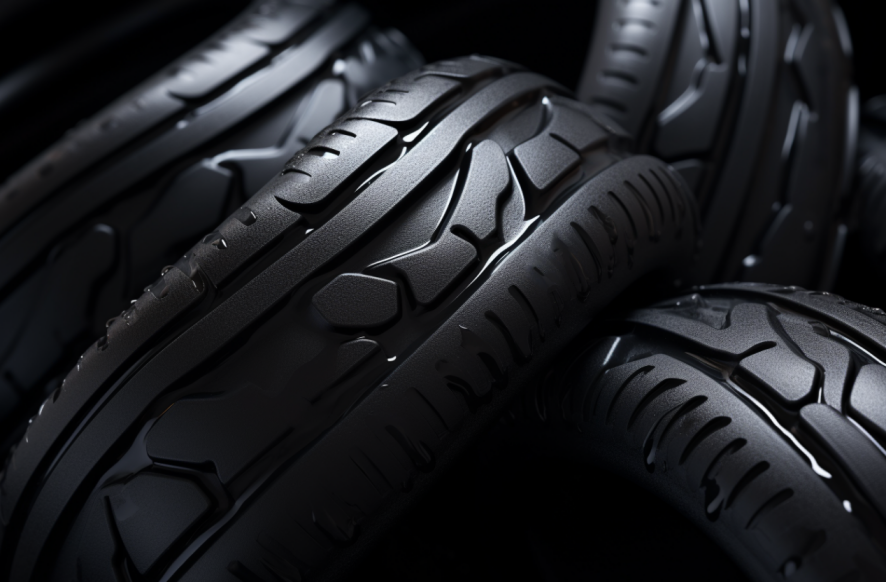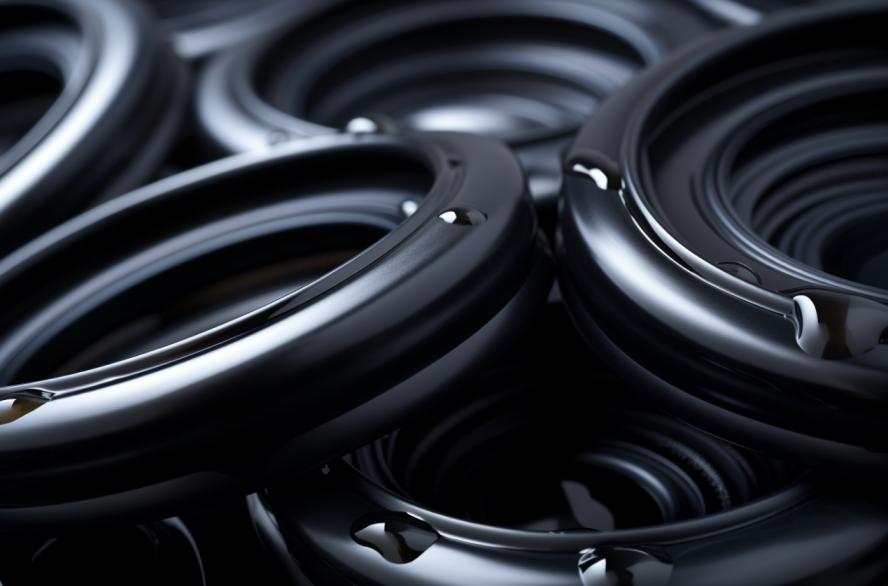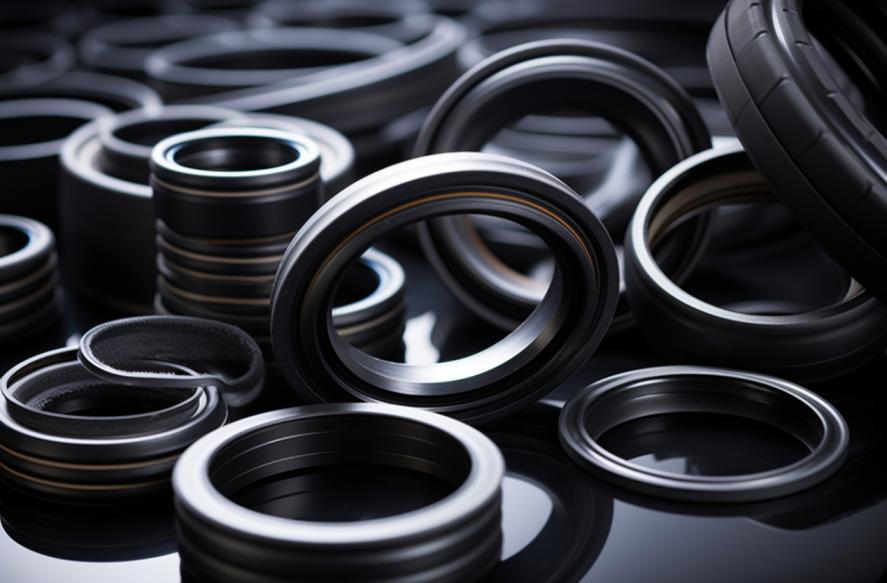Breaking Down the Chemistry: What Makes Oil Resistant Synthetic Rubber Tick?
23/05/2024
In today’s industrial landscape, the demand for resilient materials capable of withstanding the harsh effects of oils and chemicals is ever-growing. Oil-resistant synthetic rubber emerges as a hero in this narrative, offering a versatile solution to various challenges across industries. Characterized by its ability to endure exposure to oils without compromising its structural integrity, this material has seen a surge in popularity in recent years. From automotive to industrial and marine applications, its utility knows no bounds.
Introduction to Oil-Resistant Synthetic Rubber
1.1 Defining Oil-Resistant Synthetic Rubber
Oil-resistant synthetic rubber, often abbreviated as ORSR, is a specialized type of rubber engineered to withstand prolonged contact with oils, chemicals, and other harsh substances. Unlike natural rubber, which may degrade under such conditions, ORSR maintains its integrity, making it a preferred choice in environments where exposure to oils is common.
1.2 Rising Popularity and Applications
The widespread adoption of oil-resistant synthetic rubber can be attributed to its unparalleled versatility and reliability. Industries ranging from automotive manufacturing to chemical processing and beyond have embraced this material for its ability to deliver consistent performance in demanding environments. Whether as seals, gaskets, hoses, or linings, ORSR plays a crucial role in ensuring the efficiency and safety of countless applications.
1.3 Unique Properties and Industrial Significance
Oil-resistant synthetic rubber boasts a plethora of unique properties that set it apart from conventional rubber materials. Its exceptional resistance to oils and chemicals not only prolongs its service life but also reduces maintenance costs and downtime. Moreover, its inherent durability, flexibility, and temperature resistance make it an indispensable asset across a wide spectrum of industries.
Chemical Composition and Manufacturing Process
2.1 Composition of ORSR
At the heart of oil-resistant synthetic rubber lies a carefully curated blend of synthetic polymers, fillers, plasticizers, and curing agents. Each component contributes to the material’s overall resilience and performance, ensuring it meets the stringent requirements of various applications. Notably, additives such as antioxidants and anti-degradants are incorporated to enhance its resistance to oxidative and thermal degradation.
2.2 Manufacturing Process
The production of oil-resistant synthetic rubber involves a series of intricate steps, each crucial in shaping its final properties. Beginning with the polymerization of monomers, the process may entail specialized techniques such as emulsion polymerization or solution polymerization, depending on the desired characteristics of the end product. Additives are carefully mixed in precise proportions to achieve the desired oil resistance and mechanical properties.
2.3 Importance of Quality Control
In the realm of oil-resistant synthetic rubber manufacturing, quality control reigns supreme. Stringent measures are implemented at every stage of the production process to ensure consistency and reliability. From raw material inspection to product testing, manufacturers like CHEMBROAD employ state-of-the-art techniques and equipment to uphold the highest standards of quality. This unwavering commitment to excellence safeguards the performance and reputation of ORSR in the market.

Key Properties and Advantages
3.1 Exceptional Resistance to Oils and Chemicals
One of the hallmark features of oil-resistant synthetic rubber is its unmatched resistance to a wide array of oils and chemicals. Whether exposed to petroleum-based substances or aggressive solvents, ORSR maintains its structural integrity, preventing leaks and contamination in critical applications. This property is especially prized in industries where chemical compatibility is paramount.
3.2 Durability and Flexibility
In addition to its chemical resistance, oil-resistant synthetic rubber excels in terms of durability and flexibility. Its ability to withstand harsh operating conditions, including temperature fluctuations and mechanical stress, makes it an ideal choice for demanding environments. Moreover, its inherent flexibility facilitates ease of installation and ensures a tight seal, further enhancing its utility in various sealing applications.
3.3 Temperature Resistance
ORSR exhibits remarkable temperature resistance, remaining pliable and functional across a broad temperature range. Whether exposed to extreme heat or cold, it retains its elasticity and sealing properties, providing reliable performance in diverse climates and operating conditions. This attribute is particularly valuable in automotive and aerospace applications, where components are subjected to fluctuating temperatures.
Applications Across Industries
Oil-resistant synthetic rubber, manufactured by industry leaders like CHEMBROAD, is a crucial component in various sectors due to its exceptional properties.
4.1 Automotive Industry
In automotive applications, oil-resistant synthetic rubber is indispensable. It is used in seals, gaskets, hoses, and O-rings within engines, transmissions, and braking systems. These components must withstand constant exposure to lubricants and fluids, and synthetic rubber’s resilience ensures minimal risk of leaks and maintains optimal performance, reducing maintenance costs and enhancing safety.
4.2 Industrial Manufacturing
Oil-resistant synthetic rubber plays a vital role in industrial manufacturing processes. It is employed in conveyor belts, hydraulic seals, and insulating materials. These applications require materials capable of enduring exposure to oils, solvents, and chemicals commonly found in manufacturing environments. Synthetic rubber provides a reliable barrier against contaminants, enhancing efficiency and reducing downtime in industrial operations.

4.3 Marine Sector
In the marine industry, oil-resistant synthetic rubber is used extensively for sealing and gasketing applications in ship engines, fuel systems, and hydraulic systems. Its resistance to saltwater, oils, and harsh environmental conditions ensures the longevity and reliability of critical components, contributing to the safety and performance of marine vessels. Synthetic rubber seals also prevent the ingress of water and contaminants, preserving the integrity of onboard machinery.
Comparative Analysis with Natural Rubber and Other Materials
When compared to natural rubber and other materials, oil-resistant synthetic rubber exhibits several advantages.
5.1 Advantages of Synthetic Rubber
Synthetic rubber offers superior oil resistance, durability, and temperature stability compared to natural rubber. It maintains its integrity when exposed to oils and chemicals, making it suitable for demanding environments. Additionally, synthetic rubber can be formulated to meet specific performance requirements, allowing for greater customization and versatility in various applications.
5.2 Disadvantages of Natural Rubber and Alternatives
Natural rubber, while cost-effective and readily available, lacks the inherent oil resistance and durability of synthetic rubber. Exposure to oils and chemicals can cause natural rubber to swell, degrade, or lose its mechanical properties, leading to premature failure and increased maintenance costs. Alternative materials such as neoprene and nitrile rubber offer improved oil resistance but may not match the performance and versatility of synthetic rubber in certain applications.
Future Trends and Innovations
Ongoing research and development efforts are focused on improving the performance, sustainability, and versatility of oil-resistant synthetic rubber.
6.1 Enhanced Formulations
Researchers are exploring novel formulations and additives to further enhance the oil resistance, durability, and performance of synthetic rubber. By optimizing the chemical composition and manufacturing processes, manufacturers can develop next-generation materials capable of withstanding even harsher operating conditions.

6.2 Advanced Manufacturing Techniques
Advancements in manufacturing technologies, such as additive manufacturing and precision molding, are enabling the production of complex geometries and customized components with greater efficiency and accuracy. These innovations empower manufacturers to meet the evolving needs of various industries while minimizing waste and resource consumption.
6.3 Sustainability and Environmental Considerations
As sustainability becomes increasingly important, efforts are underway to develop eco-friendly alternatives to traditional rubber materials. Bio-based polymers derived from renewable sources offer a promising avenue for reducing the environmental footprint of synthetic rubber production. Additionally, recycling and reuse initiatives aim to minimize waste and promote circularity in the rubber industry, ensuring a more sustainable future for generations to come.
Conclusion
In conclusion, oil-resistant synthetic rubber stands as a testament to the ingenuity of modern engineering. With its unparalleled resistance to oils, chemicals, and harsh environments, this remarkable material continues to revolutionize industries worldwide. From its carefully crafted composition and manufacturing process to its myriad properties and advantages, ORSR exemplifies the pinnacle of material science. As manufacturers like CHEMBROAD continue to innovate and refine their offerings, the future of oil-resistant synthetic rubber shines ever brighter, promising new possibilities and applications yet to be explored.




